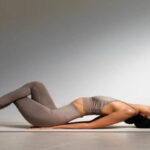5 WAYS USING PROPS WILL DEEPEN YOUR YOGA PRACTICE
Why do so many yoga students avoid props? Once, most asana classes were influenced by Iyengar, and teachers emphasized the use of props-blankets, building blocks, belts and so on. -Help students change bad alignment habits, cultivate strength and consciousness, and experience asana more deeply.
The benefits of using props in your yoga practice
- More open and free. In many asanas, my hamstring muscles pull me back like reins, which induces me to fight back by bypassing my spine and folding my front body, which in turn shortens my breathing. But when you bend forward in a sitting position, add a folded blanket under your hips, and the spine-and breathing-can stay elongated when you enter the position. In this way, as time goes by, you can lower the height of the blanket and gradually stretch your hamstrings. You speak too slowly? Compared with curing a torn or sprained back of a hamstring, it is a far cry from it. Preventing injuries is another good reason to use props. )
- Greater stability and strength. Daily activities-sitting, walking, stretching forward-tend to overemphasize some muscles while ignoring others. When the muscles needed to anchor asanas are not strong enough, there is a tendency to compensate by tension or struggle. For example, if the hip muscles cannot stabilize the pelvis in Vrikshasana (tree posture), we may twist the bottom of the spine or overstretch the knees of the standing legs, thus triggering the anatomical “train wreck” because other muscles and joints will follow the dislocation. Instead of strengthening bad alignment habits for balancing, bumping against a wall or backrest, it is better to focus on developing muscle memory (proprioception) and strength needed for stable alignment.
- Delicious rejuvenation. If you have ever been injured, sick, or just very tired, you know how tempting it is to skip the daily asana exercise, because it “requires too much energy”. With blankets and cushions to support posture, restorative yoga can provide (rather than consume) energy. Even such effortless things as lying on a rolled towel or mat during pranayama can recharge your heart. Learning how to accept or practice self-kindness is itself a lesson for many of us. )
- Keener self-awareness. “One size fits all” is a lie when it comes to yoga pants, and it’s not true for asana, either. Proportion, bone structure, strength, flexibility, and other factors vary from person to person, but all too often, we try to match our asanas to the teacher’s because that’s the “right way.” Except that it’s not. How an asana feels, not how it looks, is a better guide. Experimenting with props can help you learn to recognize the inner cues that tell you when something doesn’t fit and why. Wonky hips in Rajakapotasana (Pigeon Pose)? Try a folded blanket under the low hip. Struggling to breathe deeply in Trikonasana (triangle pose)? Place the hand on a chair instead of the floor so that you can open both sides of the ribcage.
- Sharper concentration. When a prop can free us from the distracting struggle to overcome short hamstrings or other challenges, then the mind can become one-pointed. This is essential during seated meditation poses, and lifting the pelvis by sitting on a folded blanket or a meditation cushion means that the back muscles won’t have to overwork to support the pose. Props can help us reach a state of focused awareness in many other asanas as well.
Your teacher can show you how to adjust poses using props, but if your favorite class isn’t prop-appropriate, use them at home to deepen your practice. Sofa cushions can stand in for bolsters, belts or ties for yoga straps. A sturdy chair can be useful for everything from standing poses to backbends to Sarvangasana (Shoulderstand). The best prop of all, a firm blanket, can be folded or rolled into different heights. Be like Goldilocks—sometimes you may need to experiment with more or less support until you find a place that’s “just right.”
What’s your favorite prop solution?

